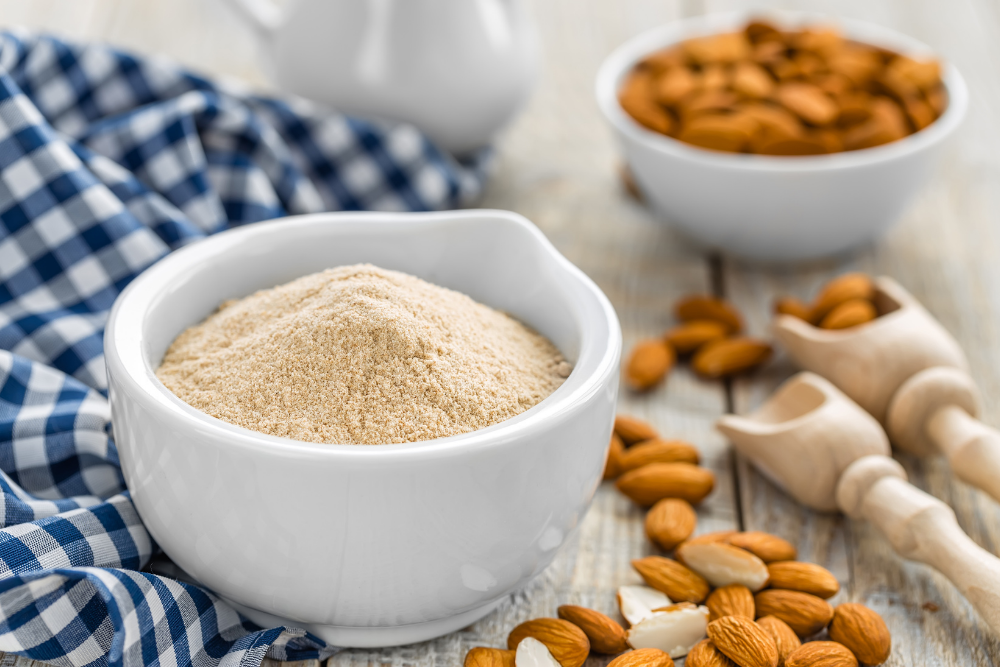
Are you curious if you can use almond flour instead of regular flour? In this article, I discuss everything you need to know about almond flour, how it works in baking, how to swap almond flour for traditional flour, and how to make 7 amazing almond flour recipes. This post contains affiliate links. Please see my disclosures.
Almond flour is a nutrient-dense, low-carb, grain-free, keto-friendly flour made from almonds. Like the nut, almond flour is high in fat, which ensures baked goods are moist and tender.
Blanched almond flour is most commonly used in baking. It’s made by removing the outer skins of the almond and then grinding the nut into flour.
Please note that blanched almond flour is different from almond meal. Almond meal is made by grinding both the skin and almond to make flour. Because it’s made from whole ground almonds, almond meal has a darker look and coarser texture.
On the other hand, blanched almond flour is made from skinless almonds, so the nut flour is light in color and offers a smoother texture.
Blanched almond flour works best for baking, although some recipes call for almond meal, so you’ll want to read a recipe carefully because the two flours will react differently in baked goods.
You can bake cookies, pie crusts, cakes, cupcakes, breads, muffins, and French macarons with almond flour and use it to bread chicken, as a breadcrumb swap in meatballs, and so much more!
Be sure to read to the end of the article to find seven of my favorite almond flour recipes!
Nutritional Benefits of Almond Flour
Almond flour contains many health and nutritional benefits. It contains Vitamin E, an antioxidant that helps the body combat oxidative stress, and the same amount of calcium as a glass of milk.
Every 1/4 cup of almond flour contains 14 grams of fat, 6 grams of protein, 6 grams of carbohydrates, and 3 grams of fiber.
Almond flour can significantly benefit someone looking to reduce their carb or grain intake. Unlike wheat or rice flour blends, almond flour is low-carb and grain-free, so it won’t immediately convert to sugar and spike one’s blood sugar levels. It’s ideal for people following a paleo diet.
Almond flour also has a low glycemic index ranking, which means it doesn’t spike one’s blood sugar and is an excellent flour for people limiting their sugar intake, such as people with diabetes.
Almond flour is also gluten-free and doesn’t contain wheat, rye, or barley. People with celiac disease, gluten intolerance, or non-celiac gluten sensitivity enjoy baking with it without worry of getting sick.
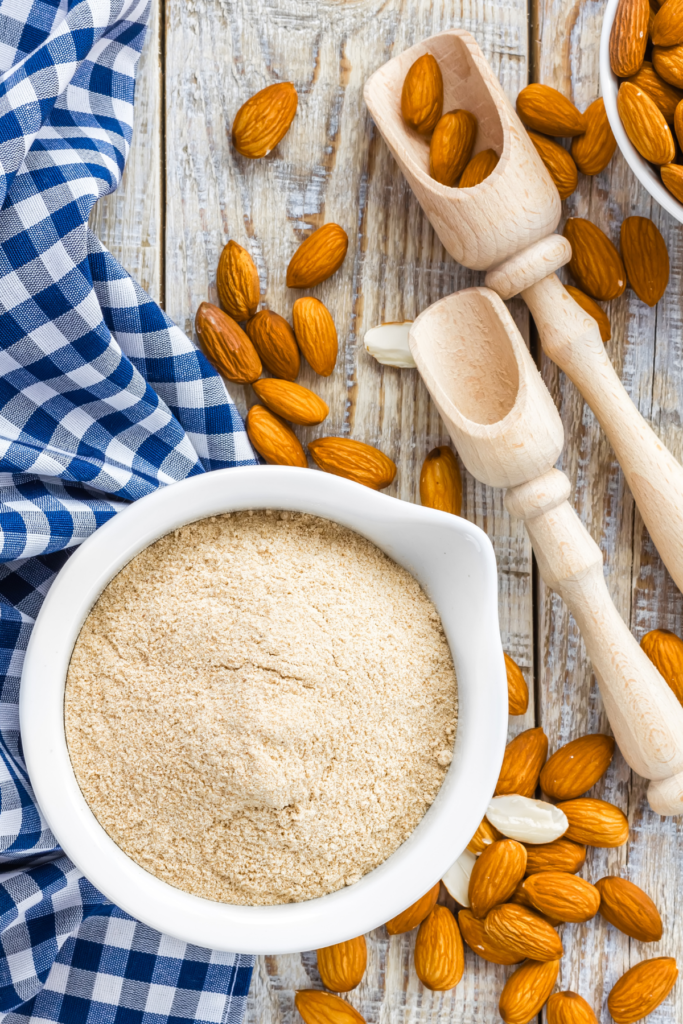
Are you baking with a gluten-free flour blend instead of almond flour? Read my article, The Ultimate Guide to Gluten-Free Flour, to understand how different flours work in different recipes.
Can Almond Flour Be Used in Place of Regular Flour?
Many wonder if almond flour can be used instead of traditional flour or all-purpose flour. The answer is yes and no. It’s essential to understand the context of the question first.
While almond flour can be an excellent flour to bake with and a fantastic wheat flour substitute, it cannot be swapped on a one-to-one, measure-for-measure, or cup-for-cup basis in recipes that call for wheat or gluten-free flour.
Almond flour is a high-fat flour that contains a lot of moisture. Baked goods with too much almond flour often look and feel greasy. If you swap wheat flour for almond flour without adjusting the recipe, you’ll wind up with greasy baked goods!
To avoid this mishap, adjust the amount of almond flour, liquids, and fats used in a recipe. I also recommend using almond flour as an add-in vs. the central component of the recipe for the best results, which I will discuss in greater detail shortly.
If you’re new to baking with almond flour, I recommend working from a recipe and getting used to the texture of the flour. A great almond flour cookbook is The Gluten-Free Almond Flour Cookbook by Elana Amsterdam – it’s a personal favorite!
Tips & Tricks to Baking with Almond Flour
Here are a few tips and tricks for baking with almond flour:
(1) Measure Well
Do not pack almond flour when measuring it. It should fit loosely in your measuring cup. Too much almond flour can make your baked goods too dense.
I gently scoop almond flour from my bag or jar and place it in a measuring cup. I then use a butter knife to sweep the excess off the top. If measuring almond flour by weight, 1 cup of blanched almond flour weighs 4 ounces.
(2) Use Less Almond Flour
If you convert a wheat flour or gluten-free flour recipe to an almond flour recipe, you’ll need less almond flour for every cup of regular or gluten-free flour.
King Arthur Baking offers the following guidelines for baking with almond flour:
- For yeast baking (think bread, rolls, pizza), use up to 1/3 cup of almond flour per cup of wheat or gluten-free flour.
- For non-yeast baking (think cookies, scones, cake, biscuits, muffins), replace 1/4 of the flour (25 percent) with almond flour. For example, if a recipe calls for 1 cup of flour, use 3/4 cup of regular flour and 1/4 cup of almond flour.
You’ll notice baked goods that include even a little almond flour will stay moist and soft for longer and have a richer flavor. Even swapping a few tablespoons of gluten-free flour for almond flour in a cake batter will make a big difference in the texture of a cake.
(3) Almond Flour Works Better in Cakes vs. Cookies
I don’t recommend using almond flour alone when making cakes and bread because almond flour doesn’t offer up that desired light and airy texture. However, using almond flour as the sole flour in cookies and brownies could work since they don’t need to be light and fluffy in texture.
The one exception is French macarons, cookies made solely from almond flour.
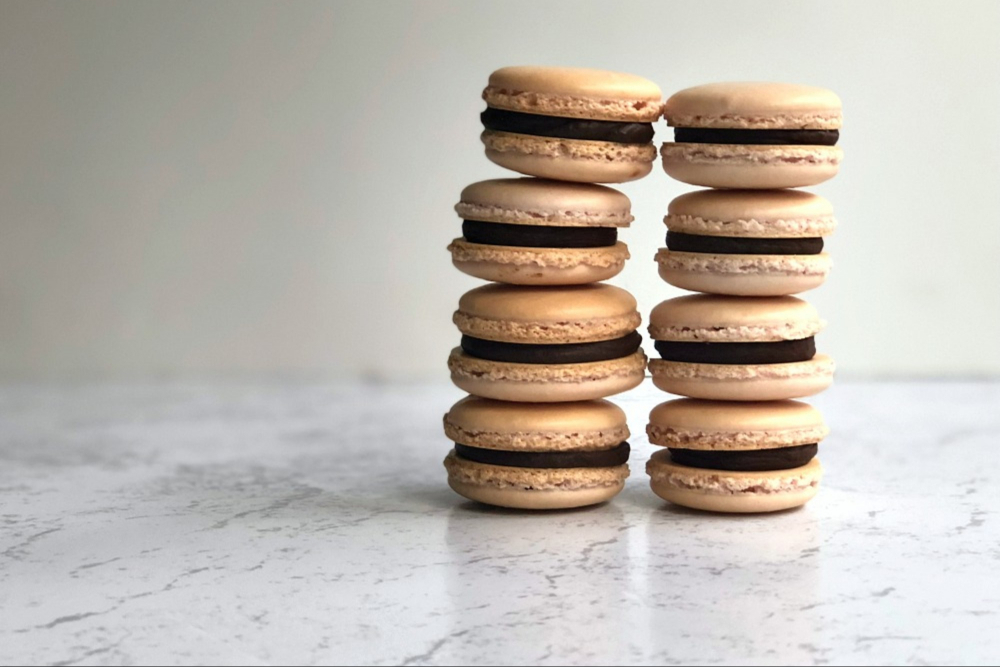
(4) Use a Little Almond Flour to Add and Retain Moisture
Gluten-free baked goods often become dry and crumbly after a day or two. However, swapping 1-2 tablespoons of flour with almond flour in a recipe will decrease the rate at which a gluten-free baked good dries out. The high-fat content in almond flour works wonders at keeping cakes and breads moist for days.
(5) Add a Binder When Baking with Almond Flour
When baking with almond flour, add some sort of binder — xanthan gum, guar gum, or psyllium husk — to add structure to your baked goods. These binders are used in gluten-free flour blends to help “bind” the flour together when no gluten (the “glue” of a baked good) is present.
Even 1/4 tsp of xanthan gum per 1 cup of almond flour can make a huge difference, although bread recipes require more xanthan gum – 2 tsp of xanthan gum for every cup of flour.
(6) Lower Cooking Time and Temperature
Baked goods using almond flour tend to bake faster. If you’re trying to convert a wheat flour recipe with almond flour, lower the temperature by 25º and cook for one-fourth less time (keep an eye on your baked goods to ensure they don’t burn).
(7) Cool in the Pan
Almond flour baked goods are moister and can fall apart more easily after baking. Allow almond flour baked goods to cool completely on a baking sheet or pan before removing them from the pan. This will allow them time to firm up as they cool, and they’ll be more likely to hold their structure.
Can Almond Flour Be Used in Place of Other Flours?
Swapping almond flour for another flour will result in a different baked good. Let’s discuss a few common flours for which you might be tempted to swap almond flour in a recipe.
Coconut Flour: If you swap almond flour for coconut flour, your recipe will likely flop. Coconut flour soaks up more moisture than almond flour, requiring your recipe to either contain more liquids or less flour. Therefore, if you’re baking with coconut flour, you’ll need much less to create the same recipes.
A lot of recipes call for some almond flour and some coconut flour. The almond flour will net a moist baked good, while the coconut flour will dry it. A little of both may result in a perfectly textured treat or bread.
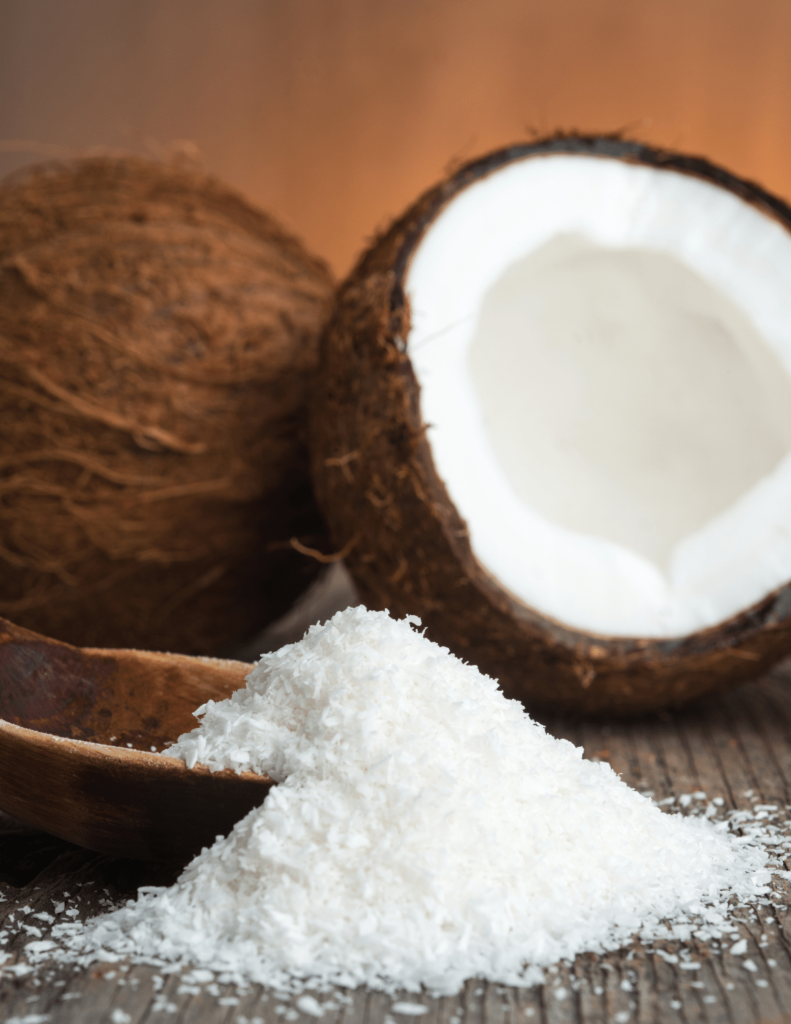
Oat Flour: If you swap almond flour for oat flour, there’s a chance it might work. While the taste and texture will differ, the two flours have similar amounts of protein and fiber. Almond flour contains a higher fat content than oat flour, so baked goods made with almond flour vs. oat flour will be denser and experience less rise.
If you want to replace oat flour with almond flour, try using 3/4 cup of almond flour for every 1 cup of oat flour.
Cassava Flour: While cassava flour can generally be replaced as a measure-by-measure swap with wheat flour, it cannot be replaced with almond flour without adjusting the amount of moisture and fat in the recipe.
The same rule applies to cassava flour as wheat flour – if a recipe calls for 1 cup of flour, use 3/4 cup of cassava flour and 1/4 cup of almond flour.
Almond Flour Substitutes
If you’re looking for another nut flour that isn’t almond flour, try pecan flour, cashew flour, hazelnut flour, or macadamia flour. Other nut flours will operate similarly to almond flour, although every recipe is different, so you’ll have to experiment or find a recipe using any of these other nut flours.
I experimented with hazelnut flour to make these Hazelnut Flour Cookies. They turned out pretty good!
How Long Does Almond Flour Last?
Almond flour is prone to going rancid more quickly than regular flour and should be stored properly to ensure it can be used for months after opening.
Store sealed packages of almond flour in the fridge for six months or the freezer for up to a year. If you forget to store the flour in the fridge or freezer, smell it before using it in a recipe. You’ll smell it if it’s gone rancid.
Ironically, almond flour increases the shelf life of baked goods because of its high fat content.
What Brands of Almond Flour Do You Recommend?
I haven’t tested all brands of almond flour, but I have found most almond flour brands to work similarly. Just be sure to purchase blanched almond flour unless expressly noted otherwise.
Brands to consider include:
- Wellbee’s Blanched Almond Flour (found online only)
- Honeyville Blanched Almond Flour (found online only)
- Bob’s Red Mill Almond Flour (found in grocery stores)
- Kirkland Almond Flour (found in Costco)
Remember, if you buy almond flour in a large container or bulk, store it in your freezer to prolong its shelf life.
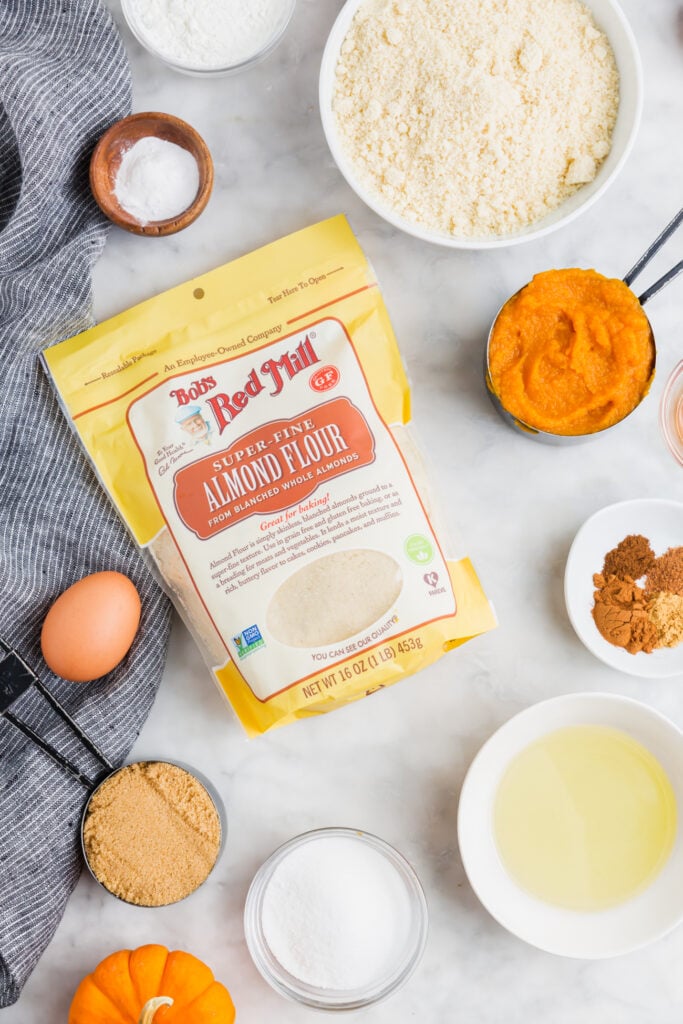
Making Almond Flour At Home
I’m not an expert at making almond flour at home and prefer to leave the task to the professionals. However, making almond flour at home with store-bought almonds and a food processor is relatively easy.
You’ll put whole almonds or blanched almonds in a food processor with the blade attachment. Then, pulse the almond 50-60 times until you have flour, occasionally scraping the sides. The whole process will take 1-2 minutes to complete.
Be careful not to over-grind the almonds, or you’ll wind up with almond butter. I’ve made my own almond and peanut butter using the same technique; only I grinded the nuts much longer.
I recommend storing homemade almond flour in an air-tight container in your freezer and using it within six months. Almond flour is known to go rancid more quickly than other types of flour.
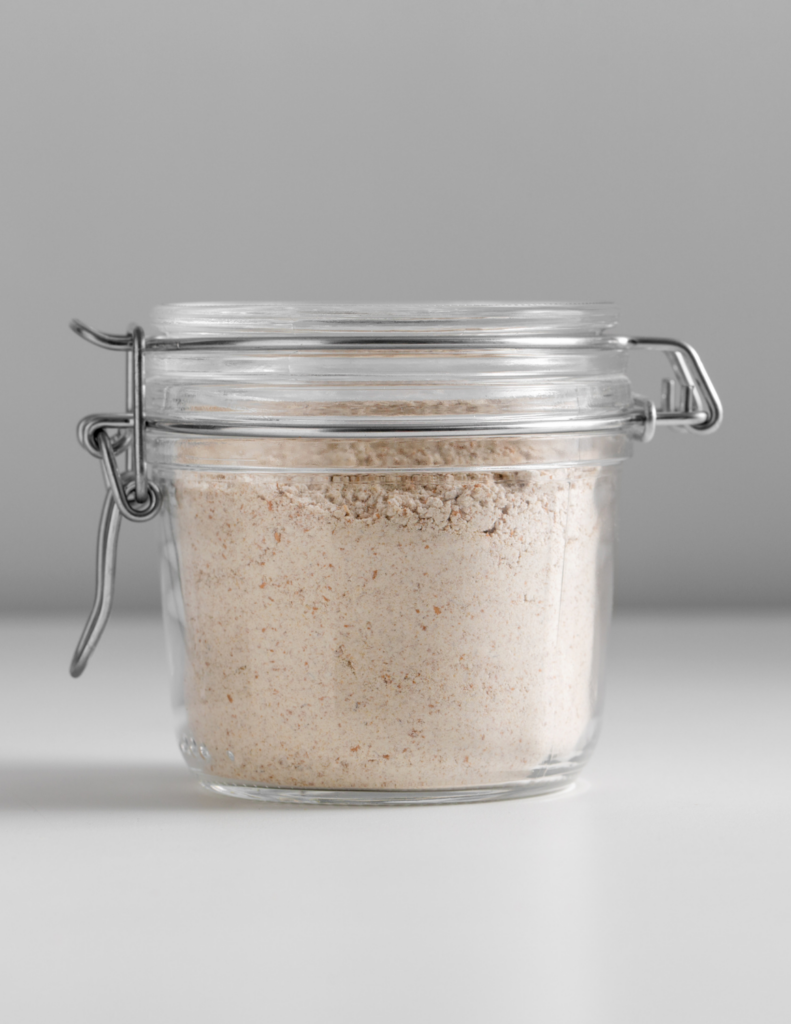
7 Amazing Almond Flour Recipes
One of the best books about baking with almond flour is the Gluten-Free Almond Flour cookbook by Elana Amsterdam. It’s one of the first cookbooks I bought after switching to a gluten-free diet, and I highly recommend it.
Here are a few other amazing almond flour recipes to get you started baking with this famous nut flour!
Almond Flour Chocolate Chip Cookies: These classic Almond Flour Chocolate Chip Cookies are perfect for anyone experimenting with almond flour. You’ll notice the cookies are soft and moist thanks to the high-fat content in almond flour.
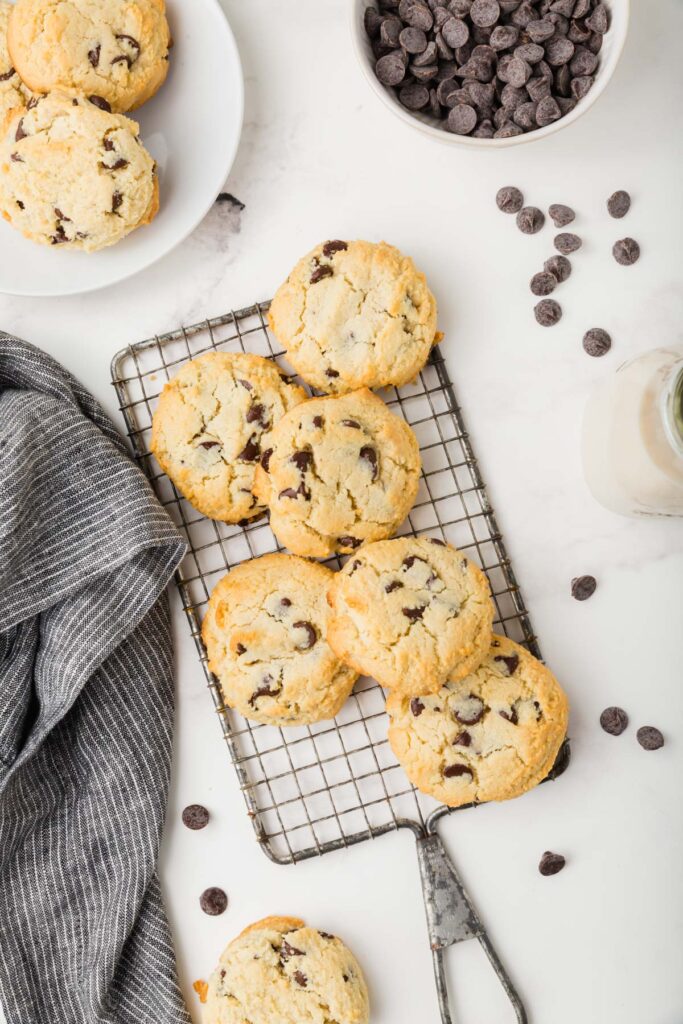
Almond Flour Bagels: These bagels are made with delicious almond flour and have an excellent taste and texture. Get my almond flour bagel recipe.
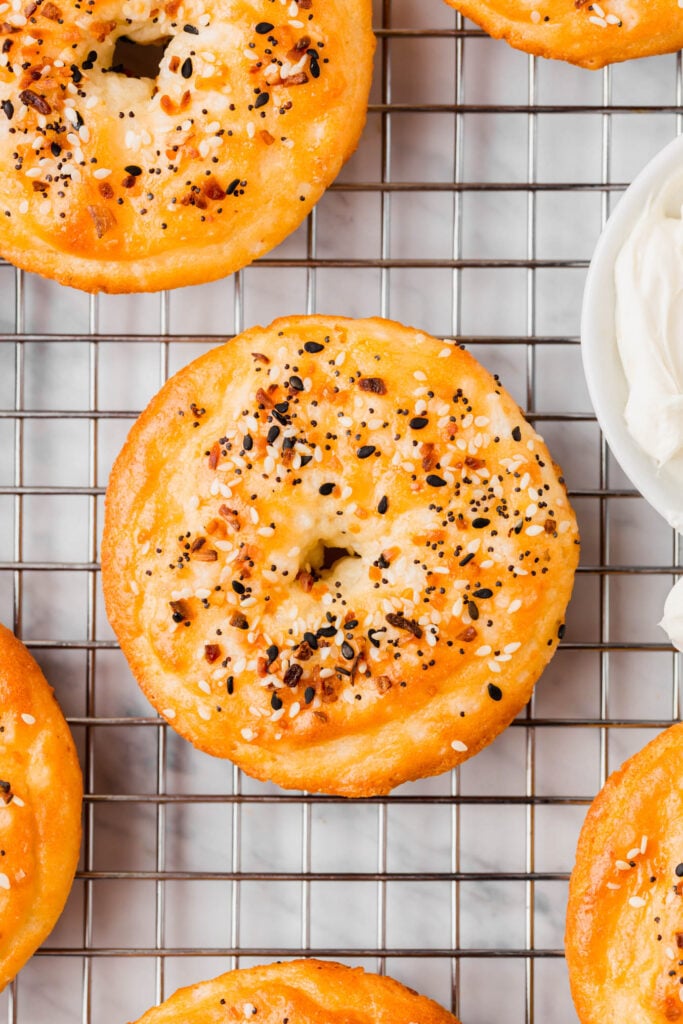
Almond Flour Chocolate Chip Muffins: These lightly sweetened and moist almond flour chocolate chip muffins are perfect for breakfast, snacking, or dessert.
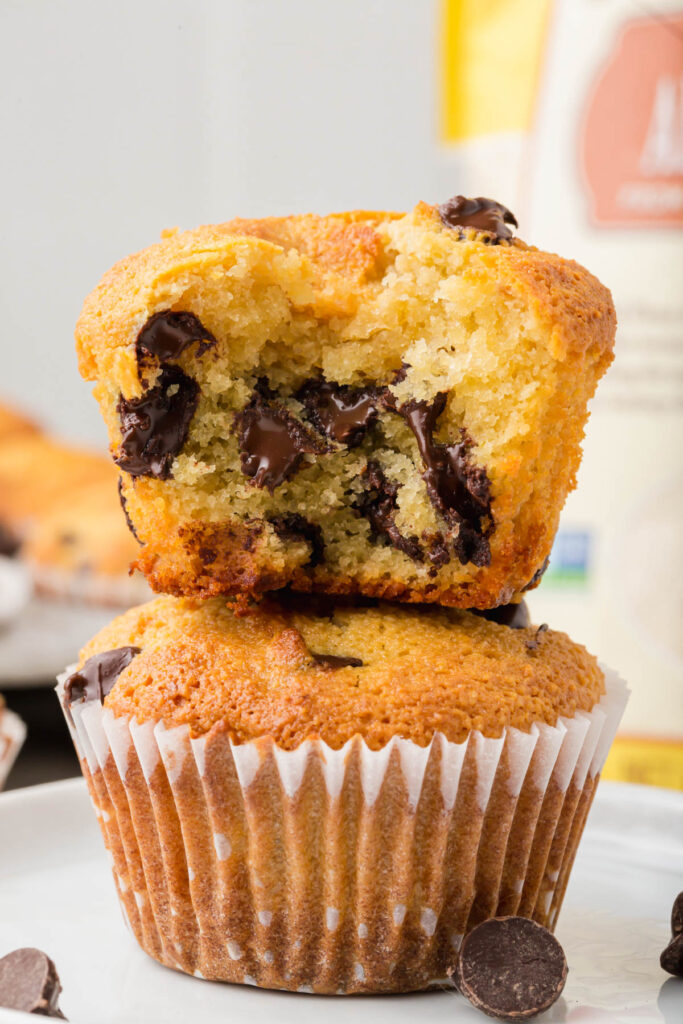
Almond Flour Cupcakes: These melt-in-your-mouth Pumpkin and Almond Flour Cupcakes are perfect year-round and taste moist and sweet.
Almond Flour Chocolate Cake: This beautiful and moist Almond Flour Chocolate Cake is made with, you guessed it, almond flour. It’s topped with a luxurious buttercream. Yum!
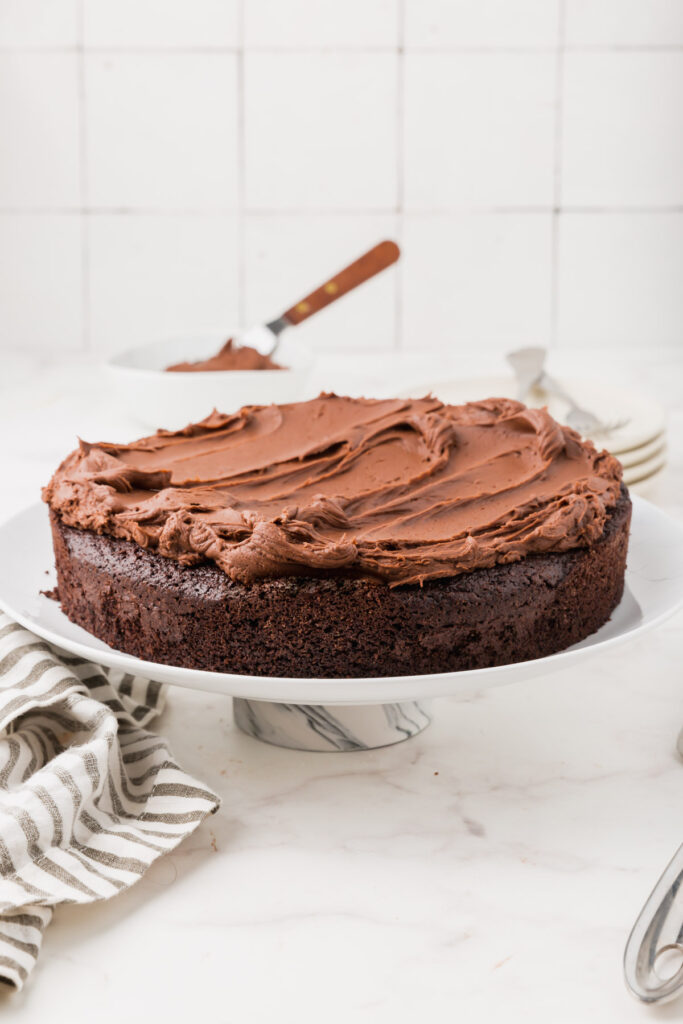
Chocolate Mug Cake: Make this Paleo Chocolate Mug Cake using almond flour and a few pantry staple ingredients. It’s the perfect indulgence for one.
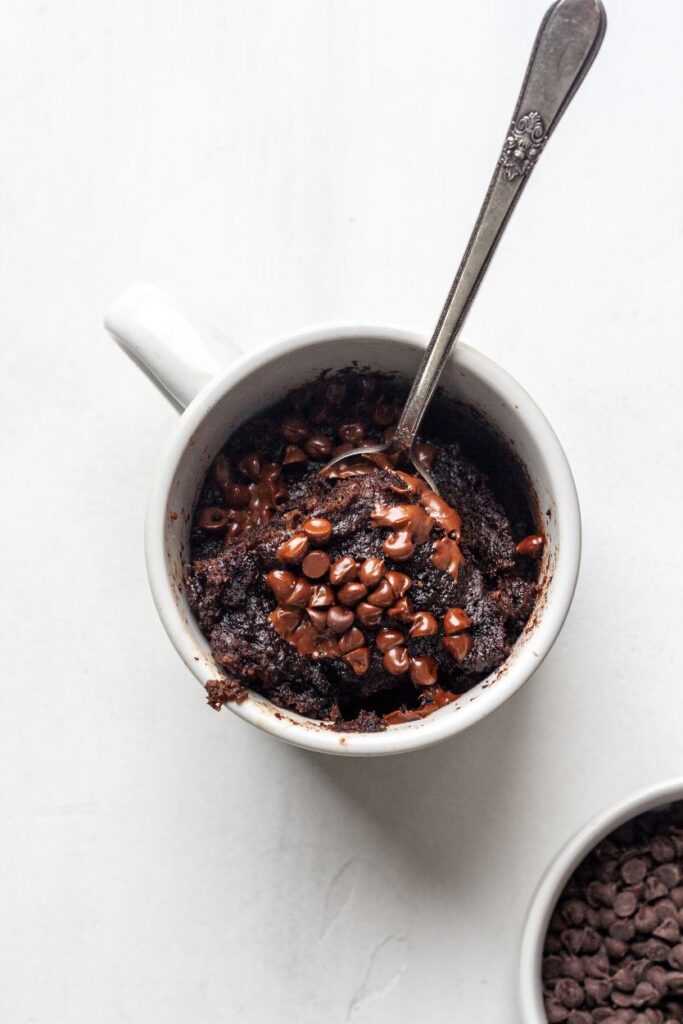
Almond Flour Thumbprint Cookies: These soft, moist almond flour thumbprint cookies make for an excellent sweet treat.
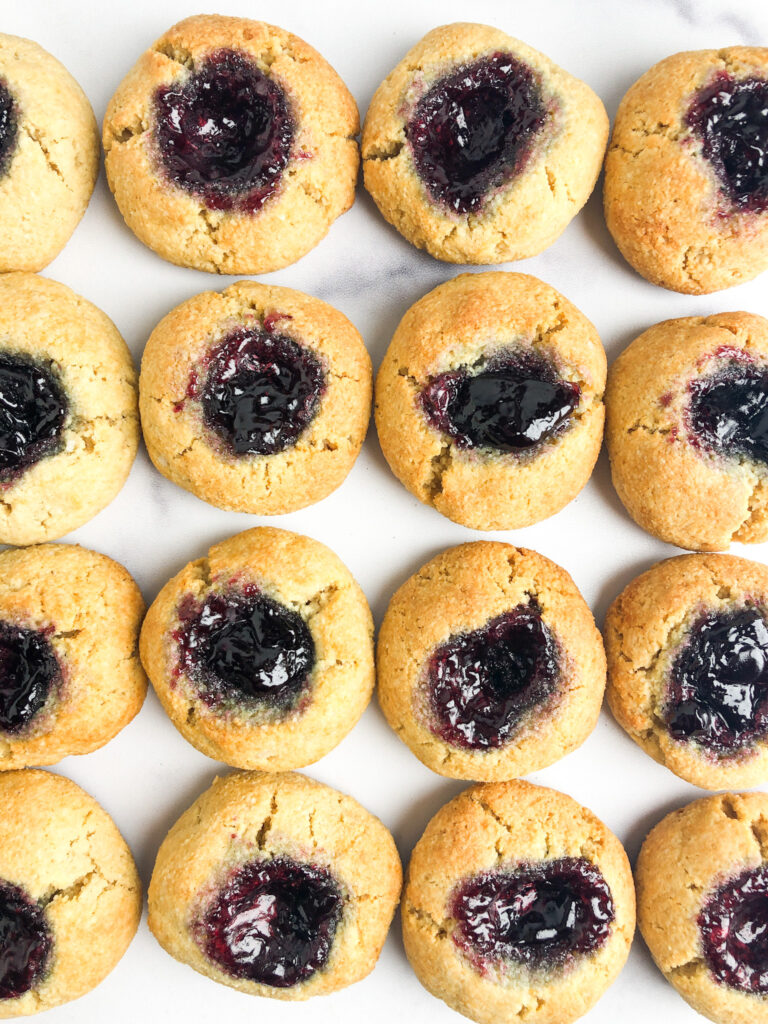
The Bottom Line on Almond Flour
Almond flour is an excellent flour to bake with, especially for people on a low-carb diet, paleo diet, or who cannot eat gluten due to celiac disease or gluten sensitivity.
While it’s great knowing that almond flour will net a super moist baked good, it should not be used as a one-to-one swap with traditional flour. Instead, it’s best used in a recipe that calls for almond flour or as an add-in to baked goods to add moisture and shelf-life to your favorite cupcakes or cookies.
You can find almond flour at most grocery stores and online, offering ample access to experimenting in the kitchen. Enjoy!
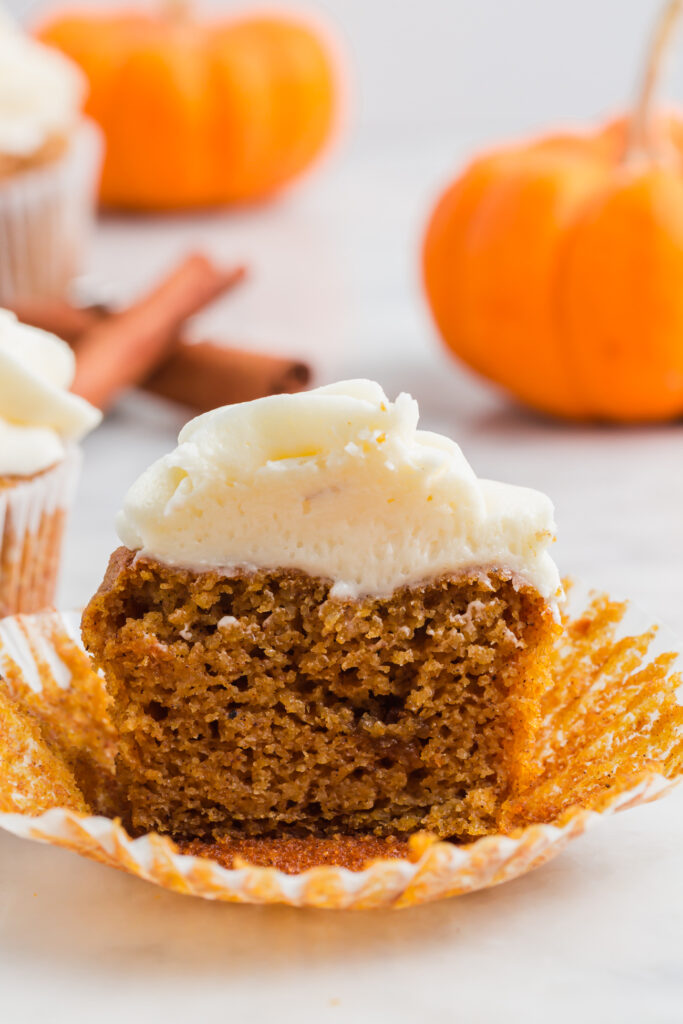
Thank you very much for your explanation of almond flour. As I have been making almond milk with the almonds, I thought I could substitute the almond flour for regular flour. Not so. i notuced the cokies were darker than normal, like you said. And,like you said, had to ledt the cookies cool before removing from the pan.
I would work with an almond flour pie crust recipe. Many include an egg as a binder. I have two kinds of crust recipes on my site: one made with rice flour and one made with graham crackers.
What would suggest for a simple pie crust recipe? The ingredients are just flour, butter and water…does there need to be a binder component added? Thank you
Thanks , I am trying to use almond flour to make corn meat fritters.
Don Bird
So the short answer is No. Unless you add all sorts of random ingredients that nobody normal would ever have in their cupboard, and change all the proportions of the recipe to get something that is, to put it politely, nearly as good as it would have been without all the cocking about. I made a banana cake with almond flour. The birds wouldn’t eat it.
I’m not sure I’m able to answer this question. I think it’s 2-3 tsps psyllium husk per cup flour but I haven’t worked enough with psyllium husk to know. Have you seen my almond flour chocolate cake recipe? It’s really good.
Yes as a replacement. But be mindful finding the right measurement isn’t exact and requires experimentation. Always best to work from a recipe if possible.
This article is very helpful; however I do have a question. If using almond flour in a cake recipe how much psyllium husk would you use as a binder? And is that in addition to egg?
You say “For yeast baking (think bread, rolls, pizza), add up to 1/3 cup almond flour per cup of wheat or gluten-free flour.” Does that mean replace 1 cup of wheat flour with just a third cup of almond flour? Or am I misreading?
I’m glad to help. I could not know if your recipe would work without trying it. Sometimes baking with alternative flours requires a little experimentation. Good luck!
This has been really a great help! Thank you! I want to make an almond cake (made it once but forgot the measurements and am troubled now)
I don’t use any known almond flour honestly because almonds are pretty expensive here. I bought almond powder but it isn’t almond meal.
Is this recipe okay? (Making it with melted butter indeed!)
Mix ¼ cup(50g) melted butter + 1tbsp less ½ cup sugar.
Add ½ (or ¾?) cup milk and mix well.
Add 1 tbsp vanilla essence and mix.
Sift: (¾) ½ cup & ¼ flour + 2 tbsp baking powder + (¾) ½ cup & ¼ cup 1almond powder.
Mix well but don’t over mix.
Add 2 tsp lemon juice and mix.
Sorry for the trouble! 🙏
Yes, use just like breadcrumbs but maybe add some seasonings and spray with avocado oil. It will fry better (crispier) on the stovetop than it will bake.
Can almond flour be used for breading vegetables and meats to be oven fried? If so, how?
I guess it depends on the cookie recipe. I don’t typically add xanthan gum to my almond flour cookies, but the general rule is 1/4 tsp xanthan gum per one cup GF flour blend.
How much binder would I need per cup of almond flour? Would 1/4 teaspoon work to start, have a vegan Blueberry cookie that is just screaming for almond flour
Thank you
Great post, following a low carb diet I really miss cake. I will have to give this a go, thanks
You could coat fish with almond flour. You need to make adjustment mainly for baking. Another great low carb flour is cassava flour.
I have a fish batter that I use for corned beef fritters. I uses 1 cup of flour. Could I use almond flour instead or is that better to bake with. Is there another low carb flour I could use? Thanks.
I’m totally excited about trying some of these recipes!